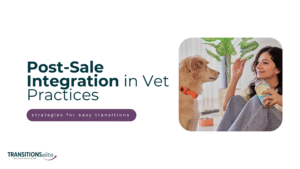List of Veterinary Practice Buyers in 2025: Traits, Strategies, and Exit Terms
Ask any owner who sold their clinic in the last three years, and you’ll hear a version of the same sentence: “I wish I knew more about the buyer before I signed.”
The headlines may advertise 8x multiples and clean exits. But behind the scenes, each group has its own model, timeline, and motive. Some slash associate pay after closing, whereas others restructure workflows within 90 days. A few overpromise and then shift deal terms at the last minute.
This isn’t paranoia. It’s pattern recognition.
This blog breaks down who’s buying veterinary practices, why they’re buying, and what that means for you as an owner, because understanding buyer psychology is the difference between a clean deal and a lopsided one.
List of Veterinary Practice Buyers in 2025 (Grouped by Strategy)
Based on aggregated buyer tracking from PitchBook, AVMA deal listings, and known M&A platforms, the list of veterinary practice buyers includes more than 100 active groups in the U.S. alone. They range from PE-backed national roll-ups to low-profile regional acquirers.
However, without understanding their buy-side strategy, clinic owners risk entering deals without insight into how ownership changes impact value, culture, and exit outcomes.
Learn how different buyer types affect value and risk here:
1. National Roll-Up Platforms
Roll-up buyers are building national networks at speed. Most are backed by private equity, and nearly all have an exit plan: they want to sell the platform within 3-5 years. Their priority isn’t your brand. Its scalability, systems, and EBITDA growth.
Traits of This Buyer:
- Private equity controls the clock. These buyers aren’t planning to run your clinic forever. Their goal is to triple or quadruple platform-wide EBITDA, then sell to a larger fund. You’re one of many assets in that equation.
- Fast timelines, templated terms. You can expect standard LOIs, centralized onboarding, and 90-day close targets. But custom deal structuring may be limited.
- Heavy post-sale integration. HR, scheduling, pharmacy ordering, and payroll are typically consolidated into a corporate system. This can lead to staff friction within months.
- High headline valuations, but they come with risk. Earn-outs tied to revenue or EBITDA targets are standard. Many deals include equity rollover into the parent entity, locking part of your payout behind a future exit.
Example Buyers (2025)
- Southern Veterinary Partners
- Rarebreed Veterinary Partners
- AmeriVet Veterinary Partners
- Community Veterinary Partners
- Heartland Veterinary Partners
These are the buyers offering 7x – 9x EBITDA but with 60% – 75% upfront and strict performance-based earn-outs. If your goal is to walk away quickly and maximize paper value, this route works. But it comes at the cost of autonomy.
2. Hold-and-Operate Buyers
These buyers aim to own long-term. Many are family office-backed, privately held, or legacy groups without a defined exit strategy. Instead of optimizing for resale, they optimize for stability. Their approach is slower, more relationship-driven, and focused on clinical continuity.
Traits of This Buyer:
- They prioritize leadership continuity. These buyers want you or your lead DVMs to remain engaged. Succession planning matters more than rapid growth.
- Flexible deal terms with high upfront cash. Most offer 80%–100% at close with minimal earn-out dependency. Instead of tight financial triggers, they rely on cultural fit and aligned values.
- Brand and team continuity are preserved. Clinics are usually allowed to retain their original name, staff, and even appointment structure, which helps reduce post-sale disruption.
- Ideal for phased retirements or mentorship transitions. If you’re not ready to leave but want a partner to carry the practice forward, these buyers build around that intent.
Example Buyers (2025)
- National Veterinary Associates (NVA)
- Galaxy Vets
- Veterinary Practice Partners (VPP)
- PetVet Care Centers
Offers in this category generally fall in the 6x – 8x EBITDA range. While the headline number might be lower than roll-ups, the real value comes from seamless integration and a higher probability of full payout.
3. Value Arbitrage Buyers
These buyers aren’t operating massive networks. They’re smaller, nimble, and opportunistic. Their strategy is to acquire undervalued clinics (often in rural areas) with tight operations, and sell to larger groups within 24 to 36 months. You may not realize it at signing, but your clinic is part of their exit plan.
Traits of This Buyer:
- Focus on low-competition markets. Clinics in secondary metros, rural zones, or underserved regions are their targets. These areas see less bidding, allowing lower entry multiples.
- Fast operational shifts. They try to make changes faster when it comes to scheduling, staff roles, and pricing to “optimize performance” for future resale.
- Heavy offers upfront with minimal infrastructure support. These buyers often put up 70%-85% cash at close but don’t offer long-term HR, IT, or compliance support like national groups.
- Intent to resell. Many arbitrage buyers are assembling 5-10 clinics to package into a sale. Your clinic is a flip, not a finish line.
Buyer Patterns (2025)
- Rural-focused acquisition teams in states like Arkansas, Mississippi, and Oklahoma
- JV partnerships between DVMs and new PE entrants
- Independent buyers creating micro-platforms for exit to Heartland, SVP, etc.
For owners of clinics producing under $500K EBITDA, these buyers can feel like a quick win. But without clear post-sale agreements, staff disruption and resale risk are real.
Learn more about the valuation benchmarks these buyers often look for.
4 New Veterinary Buyers to Watch This Year (First-Time Acquirers)
Veterinary clinic owners are fielding offers from sources they’ve never encountered before. Gone are the days when every acquisition came from a handful of recognizable consolidators.
What’s emerging now is a quieter class of buyers: those making their first move into ownership, but doing so with capital, intent, and often a non-traditional agenda.
This section outlines four types of first-time acquirers making real offers in recent years and what every clinic owner needs to understand before engaging.
1. Veterinary Executives Turned Boutique Buyers
These are individuals who spent years working inside multi-clinic networks as regional managers, COO-level operators, or partner veterinarians who’ve grown tired of bureaucracy. Backed by family capital or niche investors, they’re now building something smaller and closer to home.
What to Expect:
- Most of these buyers bring strong operational knowledge and skip the templated playbook approach.
- They generally offer direct contact without any intermediaries and push for deals that close within 45-60 days.
- Payouts often favor 75-90% upfront, but with minor holdbacks associated with staff retention or production.
| ✅When it Works: These buyers are ideal for owners looking for a quick exit but not willing to surrender their clinic’s identity to a corporate template. These buyers typically want your staff, systems, and local name to stay intact. |
2. Regional Operators Expanding into Neighboring ZIP Codes
Some established owners, especially those running multiple profitable sites are becoming buyers themselves. These acquirers know the in and out of veterinary work and often move with speed and minimal red tape.
What to Expect:
- Offers tend to be high-cash and fast-moving, sometimes structured over coffee, not boardrooms.
- They generally don’t involve third-party financing. So, you can expect fewer delays. Also, they don’t propose rebranding. They tend to retain full staff without renegotiating contracts.
| ✅When it Works: For owners located in suburban or rural markets, this type of buyer is the best way to deal with and exit, as there are no extended earn-outs or equity structures. |
3. Family Offices Entering the Pet Health Sector for the First Time
These buyers aren’t PE firms. They’re private investment groups, typically multi-generational, who want to own long-term assets that throw off predictable cash flow. Pet health clinics, especially general practices with recurring clientele, fit that bill.
What to Expect:
- Offers can come with flexible structures, such as 100% cash or partial equity retained by the owner.
- They rarely mandate big changes post-sale and prefer the existing team to manage the operations. Their hold period is usually 10+ years without the pressure to exit.
| ✅When it Works: If you want to protect your clinic’s continuity and staff while securing a fair exit. Their deals offer a nice, good balance between liquidity and legacy. |
4. Pet Industry Entrepreneurs Entering via Clinical Ownership
These are founders or product innovators in the pet space: people who’ve built businesses around pet wellness, diagnostics, tech, or supplements. As they mature, they see ownership of clinics as a channel to reach pet owners more directly.
What to Expect:
- Deals usually involve some performance-based component, though often coupled with strong cash terms.
- Their playbooks lean toward technology upgrades, subscription models, or loyalty initiatives post-acquisition.
- You may be asked to stay on as a strategic advisor or brand ambassador.
| ✅When it Works: If you’re not looking to walk away immediately and you’re curious about scaling services or tech inside your practice, this route may allow you to exit slowly while staying connected. |
Not every buyer has a headquarters, website, or team of underwriters. Some are local. Some are unknown. But they’re still making credible offers and often solving for things that matter to clinic owners: flexibility, legacy, speed, and control.
Understanding the buyer’s true agenda is your edge. It shapes not only your payout but what your clinic looks like five years from now.
Conclusion
First-time acquirers aren’t fringe players anymore. They’re shaping real offers across the U.S. often with fewer restrictions, faster closing cycles, and a closer connection to the practice’s future. Whether backed by capital or experience, these buyers bring alternative outcomes.
For veterinary clinic owners who care about what happens after the check clears, knowing how these new players think, fund, and grow is no longer optional. It’s part of smart deal prep.
FAQs
What’s the biggest difference between first-time and corporate veterinary buyers?
Corporate buyers often follow rigid processes and branding guidelines. First-time acquirers tend to be more flexible and owner-driven, offering cleaner exits or more custom terms.
Do these buyers still require earn-outs?
Some do, but many prefer full-cash offers or smaller performance-based add-ons. It’s less formulaic and more negotiable.
Are first-time buyers credible if they don’t have a website or track record?
Yes, but only with thorough due diligence. Ask about their funding, plans for your staff, and legal structuring. Credibility comes from answers, not just logos.

Melani Seymour, co-founder of Transitions Elite, helps veterinary practice owners take action now to maximize value and secure their future.
With over 15 years of experience guiding thousands of owners, she knows exactly what it takes to achieve the best outcome.
Ready to see what your practice is worth?











